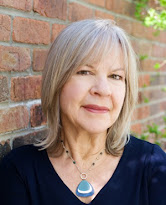By Taylor Jenkins Reid
Ballantine 2021
369 pages Fiction
How do the children of the famous prosper in the shadow of
their famous parent? This is the question that Taylor Jenkins Reid seeks to
answer in her latest book, Malibu Rising. Mick Riva is a rising singer when he
meets and marries, June Costas. June and her parents operate a fish shack on
the Pacific Coast Highway near Malibu, California. Soon, Mick becomes the pop
singing star he dreamed about, but he has no idea of how to be a parent. Four
children are born to the union, but Mick leaves his family for fame, fortune,
and other women.
June never quite recovers from the loss, and after her death
the four children, Nina, Jay, Hud, and Kit, are left to fend for themselves.
Nina, then a 17-year-old, becomes the parent and restaurant owner, assuming all
her mother’s responsibilities. The three other children rally around Nina and grow
in confidence, secure in their love for each other. Each pursues a career based
around the surf that is below the cliff where they live. Nina becomes a surfing
cover model, Jay and Kit champion surfers, and Hud a photographer, recording
their every move.
The major narration revolves around the day of the Riva’s
annual Malibu beach party, Aug. 27, 1983. Several interspersed chapters tell
the story of what has led the family to this moment. The reader soon identifies
with these finely drawn characters, loving them, worrying about them, and
despairing about what might happen to them. The party, itself, occupies a large
portion of the novel, but by the time the party is totally out of control, the
reader is so invested that we frantically read on, totally hoping for the best.

Although there is a lot of the narrative that is what might
be expected in a celebrity-driven novel, I was most impressed with the
character development and the authenticity of their emotions. This is
particularly true regarding Nina. Here is an example: “Nina, her entire life,
had been programmed to accept. Accept that your father left. Accept that your
mother is gone. Accept that you must take care of your siblings. Accept that
the world wants to lust after you. Accept, accept accept. For so long,
Nina had believed it was her greatest strength—that she could withstand, that
she could endure, that she would accept it all and keep going.” I think I
related so well to Nina, particularly because of her strength and the way in which
she lives her life according to what she feels she should be doing. One reviewer
acknowledges that Reid writes well about the rich and famous, and in Malibu
Rising she “cultivates real empathy for her characters, who are the
tender heart that beats at the novel’s core and are its greatest achievement.”

This is not a perfect novel. The actual life-changing party
takes up a large portion of the novel—perhaps too much of the novel. There are
many people roaming around Nina’s house and property, famous people and
groupies. An awful lot of craziness occurs. Yet, the family endures and remains
true to each other and end up strong and proud. The New
York Times reviewer concludes “We leave the party knowing that we don’t
have to worry about the Rivas.” (BTW, I
stole the great illustration from the NYTimes review.)
Taylor Jenkins Reid has written several novels about the
rich and famous. Interestingly, Mick Riva is one of Evelyn Hugo’s seven
husbands in The Seven Husbands of Evelyn Hugo. Daisy Jones and the
Six is a novel about a 1970s rock band. Her newest book is Carrie Soto
is Back, and Carrie Soto is one of the characters in Malibu Rising.
Here is her website.







































